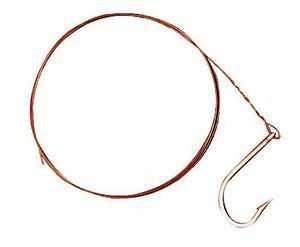
There are two schools of thoughts regarding bite-proof tippet: One school favors the soft, stainless-steel leader when fishing toothed game fish; the other school leans to the single-strand stainless-wire leader. Let’s compare the two.
The soft, stainless-steel leader, though easier to tie, is not as durable as is the single-strand stainless wire leader. When confronted with a lengthy battle with a sharp-toothed fish, the soft, stainless-steel leader is more likely to be bitten through, resulting in a good fish lost.
The second option and my personal preference is the single-strand stainless wire leader. The wire is tough, able to stand the raking teeth of a shark far better than can its softer counterpart. Also, the advantage of using this type of leader is its small diameter. Like a piece of dental floss, it fits nicely between the fish’s teeth so as the battle rages on the wire does not wear against the razor sharp teeth giving the advantage to the angler in a difficult and prolonged fight.
If your choice is the single-strand wire leader, the most commonly used knot is the reliable Haywire Twist. Although there are tools to assist you in the tying of this knot, I recommend the “old school” method you will find in numerous books and pamphlets, many currently available at your local fly shop.
[easy-social-share]